Aircraft exposition of the Military Museum of the Chinese Revolution in Beijing
To mark the tenth anniversary of the founding of the People’s Republic of China in 1958, the Military Museum of the Chinese People’s Revolution was built in Beijing. It is currently the largest museum of its kind in China. It has permanent exhibits and temporary ones. Recent temporary exhibitions included War and Agrarian Revolution, Anti-Japanese Warfare, Civil War, Korean War, Ancient Military Armor and Equipment, and Exhibition of Equipment and Military Equipment.
The museum's exhibition halls show military uniforms, equipment and weapons during the war against militaristic Japan, uniforms, equipment, weapons, armored vehicles, cruise and ballistic missiles, boats and jet aircraft, adopted after the formation of the PRC. There are also items received by the Chinese side as gifts from diplomats and military representatives and captured as trophies during armed conflicts.
The main museum building has a height of 95 m and consists of 7 floors with two wings of four floors. The emblem of the Chinese People's Liberation Army with a diameter of 6 m is located in the upper part of the main building. The name was given to the museum by Chairman Mao, and now a plate with his name hangs above the front gate. For the manufacture of gates with a height of 5 meters, metal of spent cartridges was used.
In total, the museum has 43 exhibition halls, divided into eight themes:
- The revolutionary struggle led by the Chinese Communist Party.
- National defense and development of the army of the People's Republic of China.
- The great campaign of the Chinese Communists.
- Military diplomacy of China.
— Weapon.
- Warfare of the ancient Chinese dynasties.
- Military technology.
- Military art.
The museum stores more than 1200 documents, more than 1800 cultural monuments and more than 10 works of art. Historical the exposition is located on the third floor and occupies 3 halls in the east and west wings. In the halls of the main exhibition, located in the basement, on the ground floor and on the eastern, western and southern parts of the second floor, there are about 300 units of large-sized equipment and weapons, as well as more than 1700 units of small arms and cold steel.
A rich collection of aircraft, ballistic and cruise missiles is exhibited on the ground floor of the museum. On the second floor there are stands with cold steel and firearms, as well as artillery, anti-tank, engineering and aviation ammunition. The lower floor is mainly occupied by armored vehicles, artillery systems and anti-aircraft installations. Today we will walk around the hall with aviation equipment.
The Xian N-6 long-range bomber is installed on the ground floor in the aviation and rocket technology hall directly opposite the main entrance. This aircraft, which is a licensed copy of the Soviet Tu-16, was built in series at the Xi'an aircraft factory since the late 1950s and for a long period of time was the main Chinese carrier of nuclear bombs.
Like the Soviet prototype, the N-6 bomber was armed with three mobile 23-mm defensive installations and a fixed 23-mm cannon in the bow. In total, the aircraft had seven 23-mm Type 23-2 guns (the Chinese version of the AM-23). Modern N-6 models are devoid of artillery weapons, self-defense against missiles and fighter jets should be carried out using resettable heat and radar traps and jamming equipment.
Early modifications of the N-6 were decommissioned or converted into refueling aircraft. Currently in operation are options adapted for the suspension of cruise missiles, equipped with a satellite navigation system and electronic warfare equipment. WS-6 turbofan engines (D-18KP-30) and modern digital avionics are installed on the most modern serial model N-2K. The missile carrier bomber, adopted by the air forces of the People's Liberation Army of China in 2011, is capable of carrying a combat load of up to 12 tons. The armament range includes strategic cruise missiles for the CJ-10A (copy X-55). The combat radius is 3000 km.
To the left of the bomber is a Soviet-made MiG-15 fighter with tail number “079”. The explanatory plate says that on this machine, the Chinese pilot Wang Hai (future PLA Air Force commander) personally shot down 4 enemy aircraft during the Korean War, and on his account 5 victories achieved jointly with other pilots (according to other sources, these are allegedly shot down or damaged aircraft).
Next to the MiG-15, a Shenyang J-2 fighter is installed. This Chinese version of the improved modification of the MiG-15bis. Fighters of this type were manufactured in Shenyang. The training spark is known as the JJ-2.
Although nothing is known about the use of Chinese encores on the Korean Peninsula, fighters of this type were actively used in the 1950s in air battles over the Taiwan Strait and were in service with the PLA Air Force until the early 1980s. Since the mid-1960s, these machines were mainly intended to be used to strike ground targets.
The museum displays a Tu-2 piston bomber. On aircraft of this type during the war in Korea, Chinese volunteers fought. Despite significant losses, in some cases the crews of Chinese bombers achieved high results.
One of the most successful operations was the bombing of the Hedao Islands, located a few kilometers from the mouth of the Yalu River. The purpose of the operation was the destruction of American observation posts and radar stations that controlled the MiG Alley. According to Chinese data, during an air raid on November 6, 1951, nine bombers dropped 8100 kg of bombs. In this case, all the targets were hit, and the enemy suffered heavy losses.
Unfortunately, the track record of the bomber presented at the museum is not known, the explanatory plate only says that Tu-2 aircraft were operated by the PLA Air Force from 1949 to 1982.
In addition to the PLA Air Force combat aircraft that fought in Korea, the museum’s collection includes their opponents. The United Nations forces in Korea used North American P-51 Mustang piston fighter jets, mainly to attack ground targets. Sometimes they fought defensive aerial battles with jet MiG-15s, successfully acted against the Chinese and North Korean attack aircraft Il-2 and Il-10, and were involved in intercepting Tu-2 bombers. On the account of the Mustangs several downed Yak-9U and La-11 fighters.
The explanatory plate for the P-51D fighter says that in the late period of the liberation war, the People's Liberation Army of China captured several fighters belonging to the Kuomintang army. It is known that in 1946 the Kuomintang had about a hundred "Mustangs." In August 1949, the PLA Air Force Mustang fighter squadron, based at Nanyuan Airport, reached operational readiness. At the founding ceremony of the PRC, nine P-51Ds flew over Tiananmen Square, including this aircraft.
The main rival of the MiG-15 during air battles over the Korean Peninsula was a North American F-86 Saber fighter jet. In 1954, the first F-86F arrived in Taiwan; in total, the Kuomintang Air Force received more than 300 Sebras, which subsequently participated in air battles with PLA air force fighters. The last air battle between fighters from mainland China and Taiwan took place over Fujian on February 16, 1960. Although American-made F-86F fighters were inferior to the Chinese MiG-17F according to flight data, the battles were with varying success. Taiwanese pilots had the best qualifications, in addition, in the arsenal of their Sabers there were AIM-9B Sidewinder aerial combat missiles with an infrared seeker. The Sidewinder was first used in aerial combat on September 24, 1958. On that day, a Chinese MiG-15bis was shot down by hitting a homing missile "air-to-air", and pilot Wang Sy Jong was killed. One of the released AIM-9Bs did not burst and fell on the territory of mainland China in Wenzhou county, which made it possible for Chinese and Soviet specialists to study new weapons.
At the exhibition of the Military Museum of the Chinese Revolution in Beijing, the Saber is presented by Captain Xu Tinjie, who hijacked an F-86F fighter in China. A Taiwanese pilot took off from the Xinzhou airfield in Taiwan on June 1, 1963 and landed at the Longyan Airfield in Fujian Province.
Next to the F-86F Saber fighter, a Lockheed T-33A Shooting Star combat training aircraft is installed. On this plane, on May 26, 1969, a crew flew in from Taiwan, consisting of instructor Captain Huang Tianming and cadet Zhu Jinjunem.
The T-33A fighter jet was created on the basis of the Lockheed F-80 Shooting Star single-seat fighter, which was used at an early stage of hostilities in Korea. If necessary, the T-33A UTS could act as a ground attack aircraft and fight piston bombers, it was armed with two 12,7 mm machine guns and could carry a combat load of up to 907 kg.
Another defector was Captain Lee Davei, who hijacked a general-purpose U-22A piston aircraft from Taiwan on April 1983, 6. Initially, this machine, developed by De Havilland Canada and capable of carrying 6 passengers or 680 kg of cargo, was designated DHC-2 Beaver.
After the Beaver began to be used by the American army in the first half of the 1950s, it was given the designation L-20, and after 1962 - U-6A. Due to its reliability, good handling and excellent take-off and landing characteristics, the DHC-2 Beaver was very popular and was mass-produced until 1967.
For the training of Chinese pilots used a variety of piston aircraft. The first PLA of the PLA Air Force was the captured Japanese Type 99 Coren (Tachikawa Ki-55).
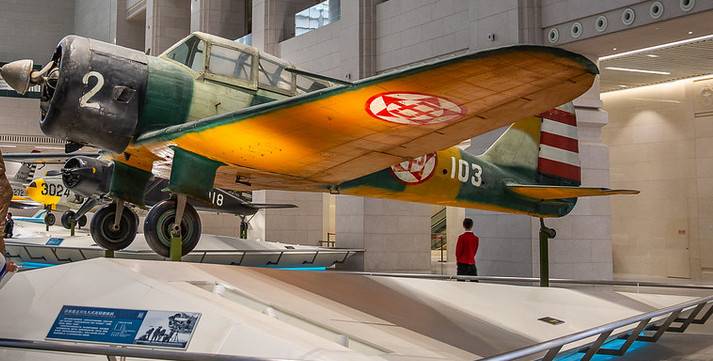
Photo: NTG842, Flickr
Type 99 Coreren Training Aircraft
In March 1946, a flight school began operating in Lohang, where there were several restored Type 99 aircraft. Due to difficulties in supplying fuel and lubricants, the aircraft were refueled with alcohol and used automobile engine oil.
The museum also has a training aircraft Nanchang CJ-6, created on the basis of the Yak-18. After the deterioration of Sino-Soviet relations, the supply of aircraft from the USSR ceased, and the question arose of creating their own TCB for initial flight training.
When creating the CJ-6 aircraft, Chinese engineers redesigned many components and parts, which allows us to consider it an independent development. The main fundamental difference in the design of the CJ-6 is the fuselage of aluminum alloys, which increased strength and resource. Initially, the aircraft retained the M-11 engine, but subsequently the 6-liter HS-285A engine was used. from. In 1966, an armed modification of the CJ-6B with a 6-liter HS-300D engine appeared. from.
In 1957, the construction of the Nanchang Y-5 aircraft, which was a licensed version of the An-2 biplane, began at the Nanchang aircraft factory. Until 1970, managed to build 728 aircraft. After the production was moved to Shijiazhuang, the aircraft received the designation Shijiazhuang Y-5.
Subsequently, the Chinese "maize" was modernized and mass-produced until 2013. In total, more than a thousand Y-5s were built in Nanchang and Shijiazhuang. Piston aircraft of this type are still used by the PLA Air Force to transport goods, passengers and train parachutists.
In 2019, it became known that Russia intends to acquire a batch of ten Y-5BG aircraft in the PRC, which they will operate in the interests of agriculture and forestry and the prevention of forest fires.
The first supersonic fighter of the PLA Air Force was Shenyang J-6. Mass production of the aircraft, which was a licensed version of the Soviet MiG-19S, began at the Shenyang aircraft factory in the early 1960s.
Until 1981, about 3000 J-6 fighters of various modifications were delivered to the customer. In addition to the front-line fighter and the two-seater training version of the JJ-6, interceptors and reconnaissance modifications were created in the PRC on the basis of the J-6 in China.
In 1977, modernized all-weather fighters with radar systems began to enter service. J-6s of various modifications formed the basis of the PLA Air Force fighter fleet until the early 1990s. The official farewell to the J-6 in China took place in 2010. But a certain number of aircraft of this type are still available in flight test centers and aircraft factories. In addition, more than a hundred J-6s have been converted into UAVs, which serve as targets during tests of aviation guided missiles and anti-aircraft missile systems. Radio controlled jets Drones can also be used to break through air defenses. Several dozen J-6 drones have been spotted at airbases along the Taiwan Strait.
Based on the J-6 fighter in the mid-1960s, the Nanchang Q-5 attack aircraft was created. This is the first combat aircraft designed in China independently. The release of Q-5 began at the end of 1969, during the period of the greatest exacerbation of Soviet-Chinese relations. A total of about 1300 jet attack aircraft were built in Nanchang.
Serial production of the Q-5 continued until the second half of the 1980s. The latest versions of attack aircraft could carry guided bombs and missiles with television or laser guidance. The Q-5 attack aircraft along with the N-5 front-line bombers (the Chinese version of the Il-28) for a long period of time have been the main Chinese carrier of tactical nuclear bombs. Currently, Q-5 aircraft are considered obsolete and are being decommissioned.
In the exhibition hall of the museum there are two jet attack aircraft. Near one of them is a sculpture of a pilot in a flight helmet.
Despite the deteriorating Soviet-Chinese relations, in 1961 a license was issued to the PRC for the production of the MiG-21F-13 and the R11F-300 turbojet engine. In addition to the drawings and technical documentation, China received several ready-made fighters, as well as kits for assembling the first batch. The Chinese version of the MiG-21F-13 is known as Chengdu J-7.
However, due to the general decline in production culture caused by the “cultural revolution”, the pace of construction of J-7 fighters was slow. In addition, aircraft delivered to combat squadrons had poor build quality and a lot of defects.
It was possible to bring the J-7 to an acceptable level of technical reliability only in the second half of the 1970s. After that, mass production was deployed at the aircraft factories in Shenyang and Chengdu. At first, the J-7I modification was serially built, without guided missiles and with enhanced cannon weapons. In parallel, the production of J-6 fighters continued, which were better mastered by the industry and the technical composition of combat regiments.
Further improvement of the J-7 in the PRC was largely due to the outright theft of Soviet MiG-21MF fighters, delivered to North Vietnam through Chinese territory. In the 1980s, Chinese designers relied on Western help. In the 1980-1990s, modifications with modern radar systems and avionics, equipped with fairly advanced melee defense systems, were created and adopted. The production of the most advanced modification - J-7G - continued until 2013. About 2400 J-7 family fighters were built in the PRC, and about 300 aircraft were exported. The reason for the great longevity in the PLA air force of a clearly obsolete fighter is its relatively low cost, ease of maintenance and low operating costs. Until now, the Chinese clones of the MiG-21 are armed with several “second line” air regiments. Single J-7s and JJ-7s are also actively used as training aircraft in aviation units armed with modern fighters.
After the adoption of the J-7, it was clear that this front-line fighter does not suit the role of the main interceptor of air defense. This required an aircraft with a longer flight range, equipped with powerful radar, automated guidance equipment from ground command posts and armed with medium-range missiles. The PLA Air Force leadership, fearing Soviet and American long-range bombers, demanded the creation of a supersonic interceptor fighter capable of reaching a height of 20000 m, with a combat radius of at least 700 km. Chinese designers did not reinvent the wheel and, taking as a basis the well-developed aerodynamic design of a plane with a triangular wing, created the J-8 interceptor. This aircraft looks very much like the J-7, but has two engines, much larger and heavier.
The first flight of the J-8 fighter took place in July 1965, but due to the general decline in industrial production caused by the Cultural Revolution, serial aircraft began to arrive in combat units only in the early 80s. By that time, a fighter equipped with a very primitive radar sight and armed with two 30-mm guns and four melee missiles with the PL-2 TGS no longer met modern requirements. In addition, the technical reliability of the first J-8 was very low. All this affected the volume of serial construction of interceptors of the first modification, according to Western data, they were built a little more than 50 units.
In the second half of the 1980s, the operation of the advanced J-8A interceptor began in the PLA Air Force. In addition to better assembly and elimination of a significant part of the "children's sores", this model was distinguished by the presence of Type 204 radars with a detection range of about 30 km. Instead of 30-mm cannons, the 23-mm Type 23-III gun (a Chinese copy of the GS-23) was introduced into the armament, and in addition to the PL-2 missiles, advanced missiles with the PL-5 thermal homing missile could be used. Despite the improvement in the combat characteristics of the upgraded J-8As, relatively few were built, and they entered the regiments where the interceptors of the first modification had already been operated.
In the early 1990s, in order to improve combat performance, part of the J-8A was modernized by installing a radar capable of seeing targets on the background of the earth, a new fire control system and state recognition, a radar receiver and semi-automatic navigation equipment based on beacon signals. The finalized interceptor is known as the J-8E. Despite the improvements, the J-8E did not meet modern requirements. The main disadvantages of this fighter were considered modest characteristics of the radar and the absence of medium-range missiles with radar guidance in the armament. Although the J-8A / E no longer met the realities of the 21st century, their radars and communications equipment could be easily suppressed by the electronic equipment of modern bombers, and missiles with TGSN launched at a distance of no more than 8 km had low noise immunity to thermal traps, the operation of interceptors lasted until 2010. Two J-8 aircraft escaped butchering and serve as museum exhibits. In the second half of the 1980s, mass production of J-8II interceptors with side air intakes and a powerful radar began, but such aircraft are not yet in the museum's collection, although they are also considered obsolete.
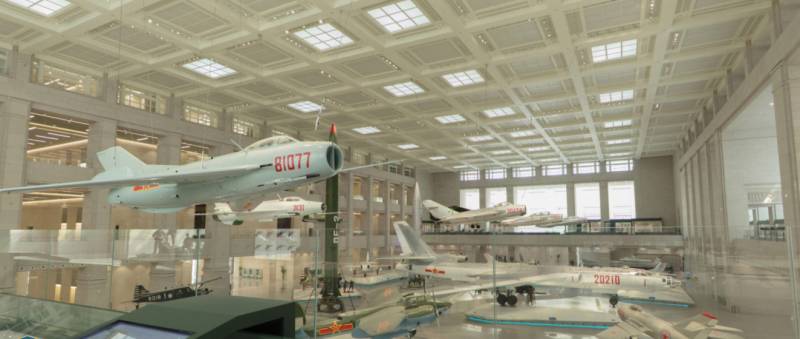
Photo: NTG842, Flickr
View of the exhibition hall of aviation and rocket technology from the second floor
In the next part of the photo tour of the halls of the Military Museum of the Chinese Revolution, we will examine the ballistic, cruise and anti-aircraft missiles presented here, and also briefly familiarize ourselves with the history of their creation and use.
When you get acquainted with the exhibits available in the museum, you pay attention to the fact that all samples of aviation and rocket technology are carefully restored and are in very good condition. Overhauls have recently been carried out in the halls open to visitors, while the interior and decoration details used in the construction of the museum in the mid-1950s are preserved.
To be continued ...
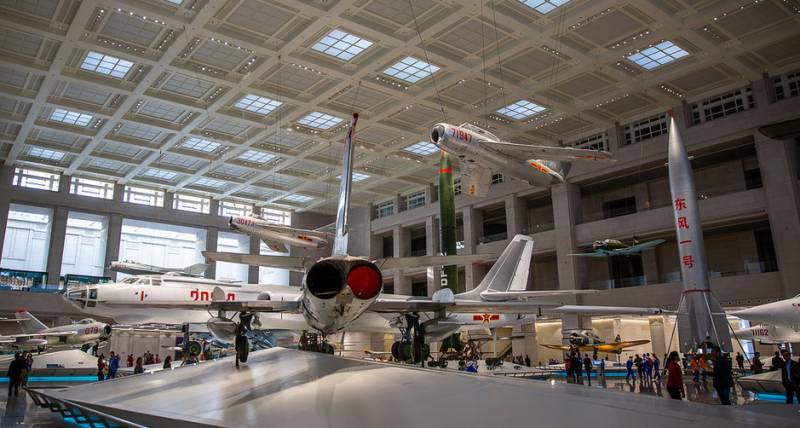
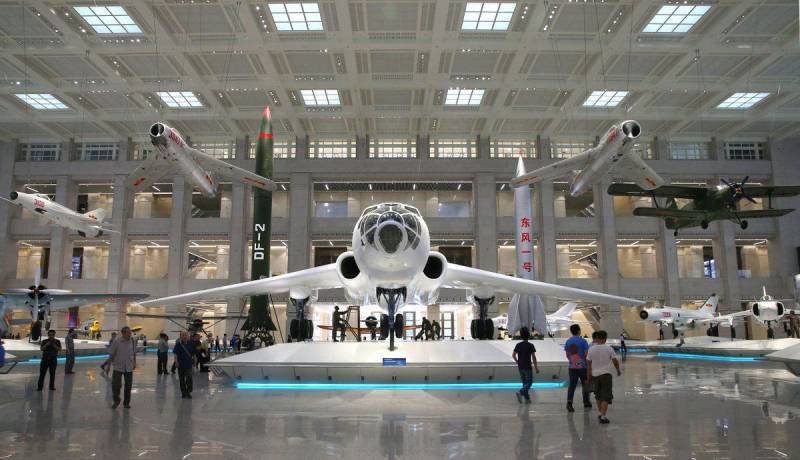
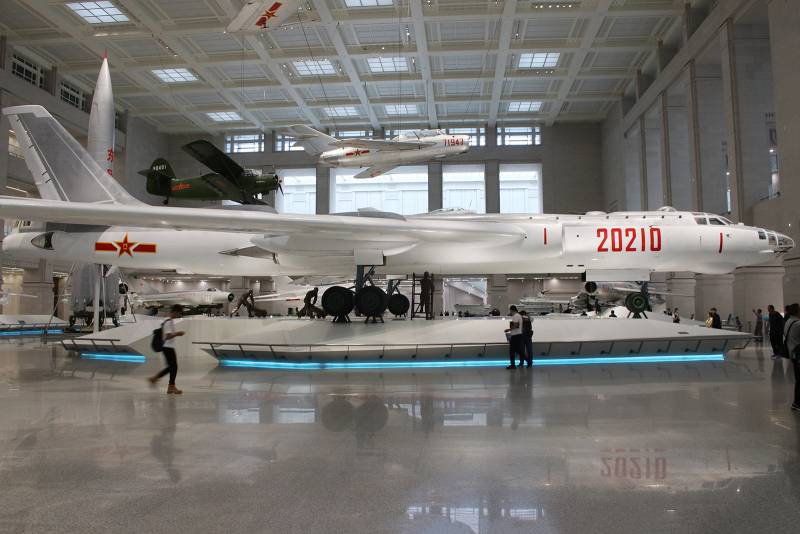
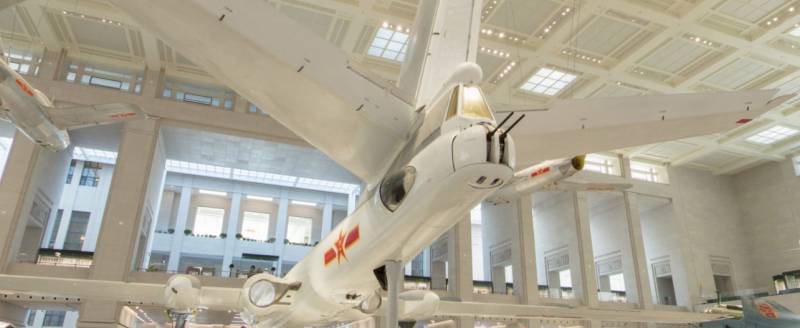
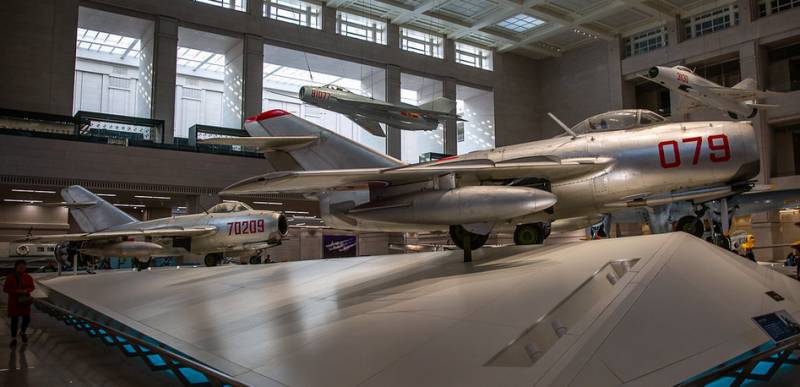
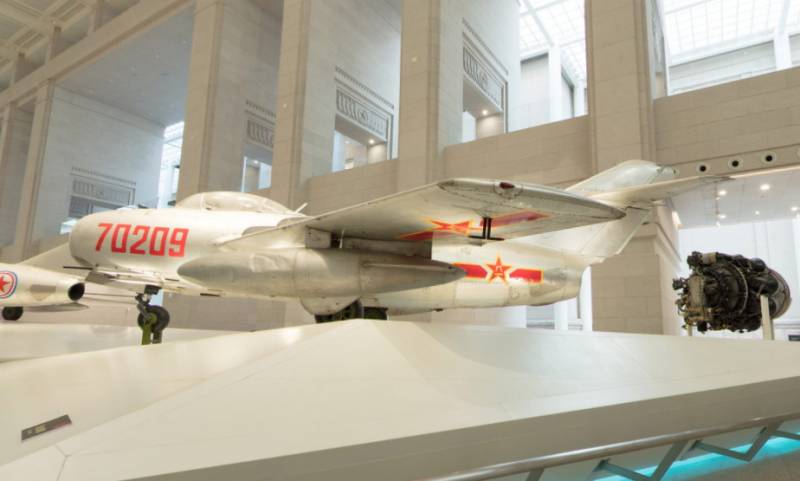
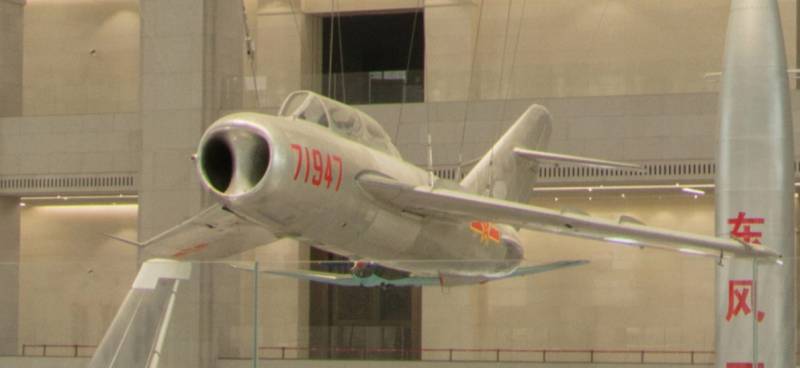
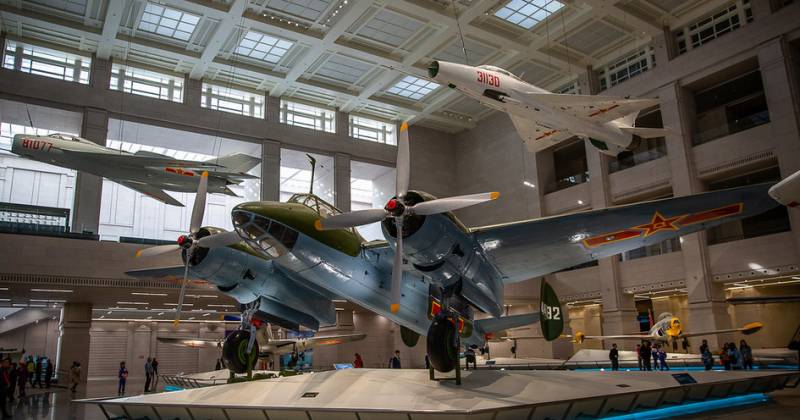
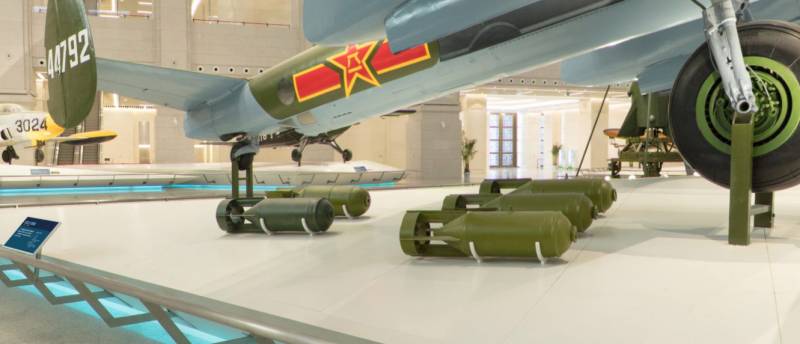
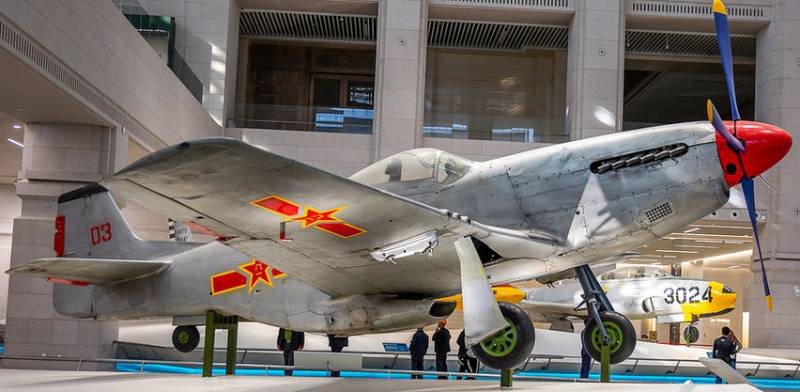
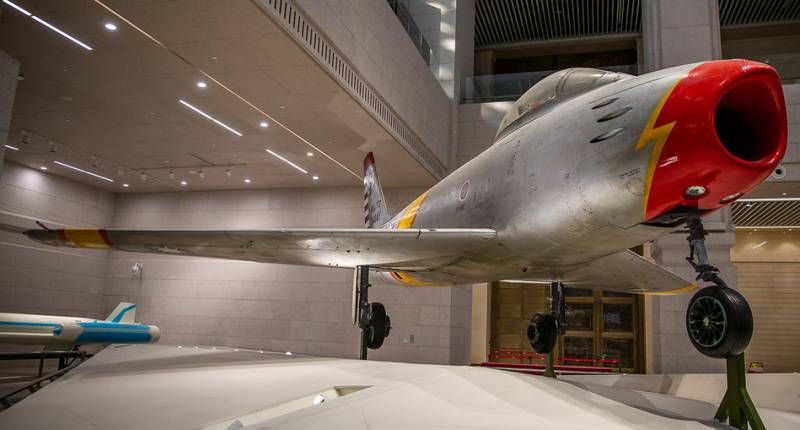
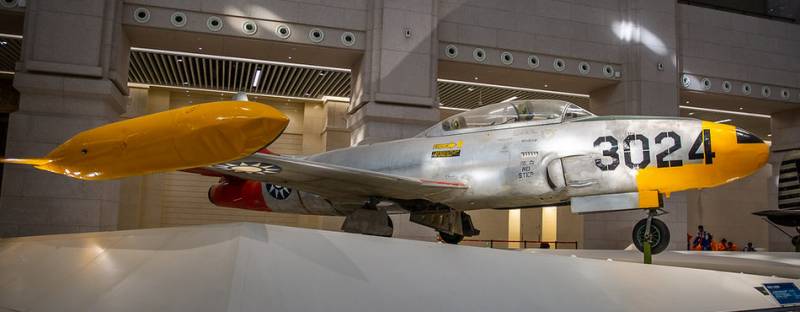
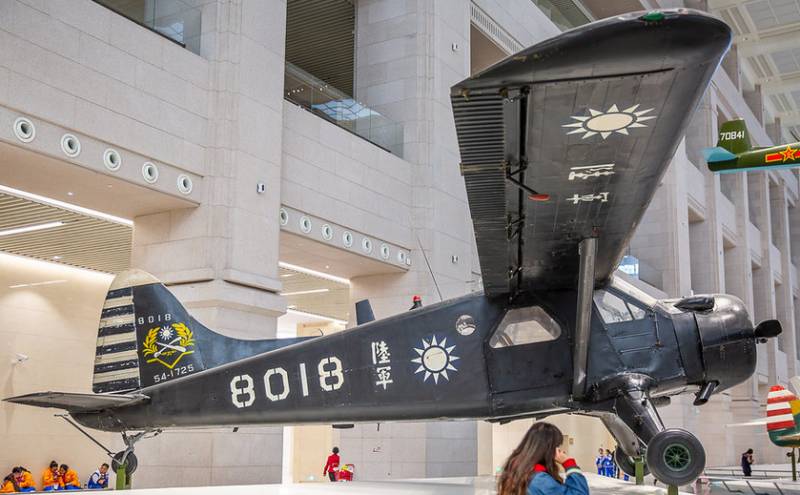
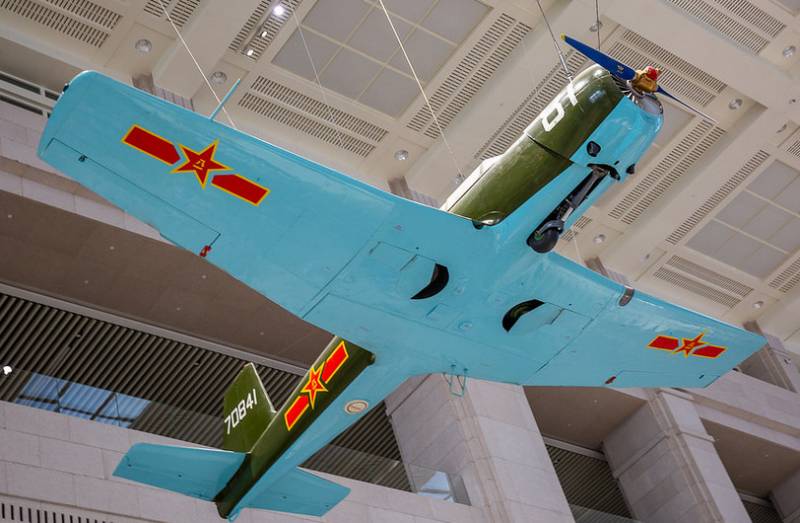
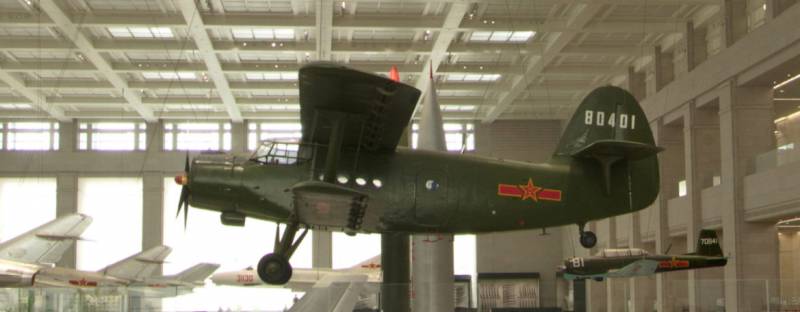
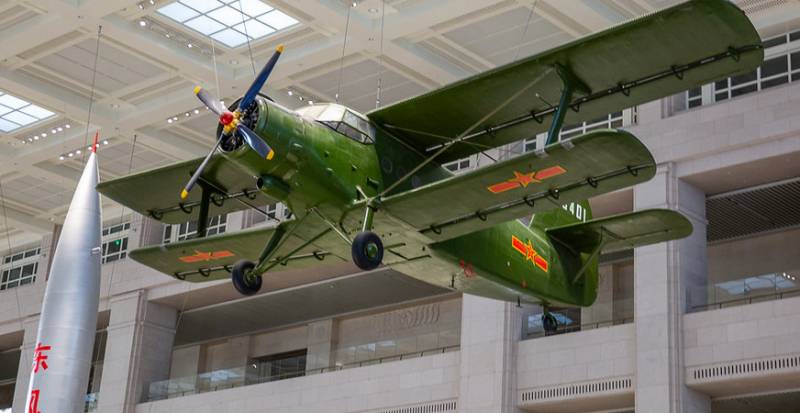
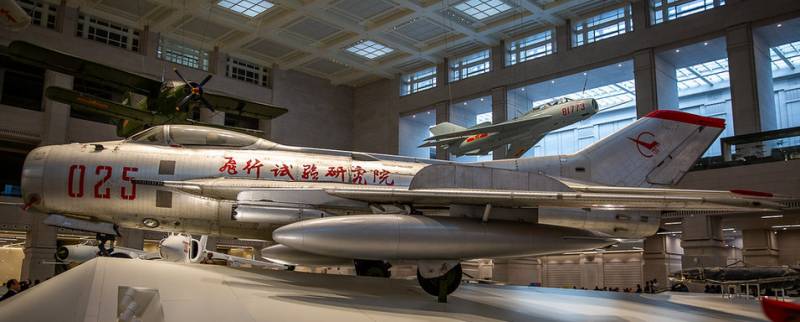
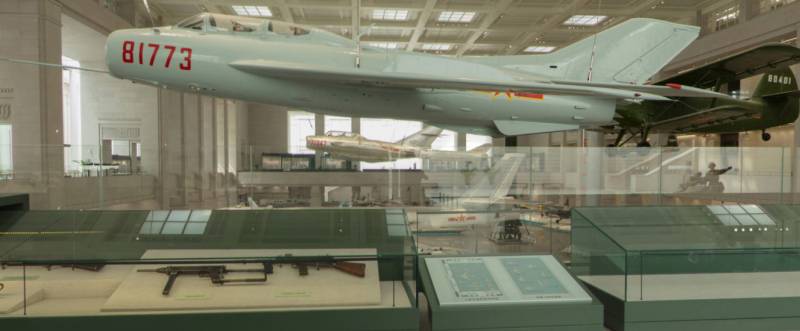
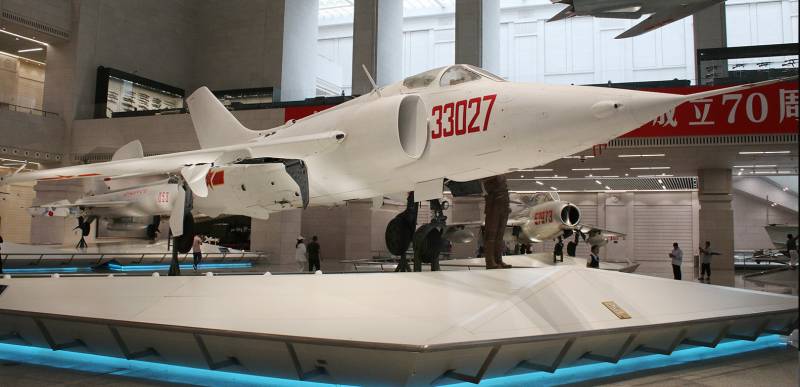
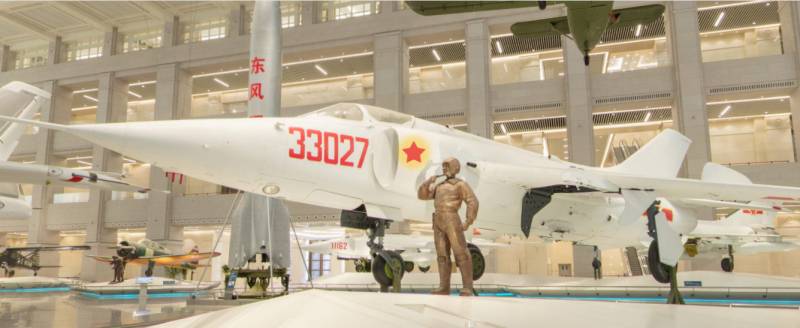
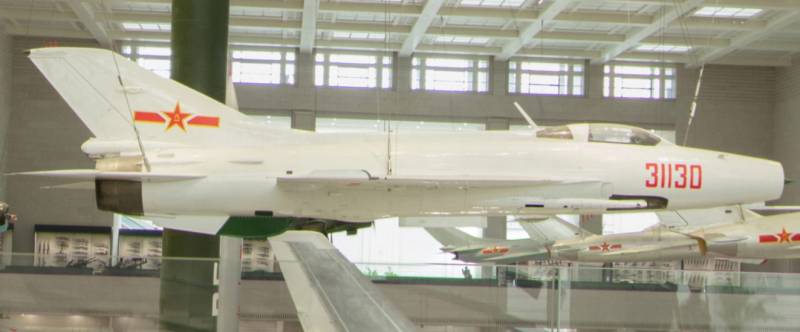
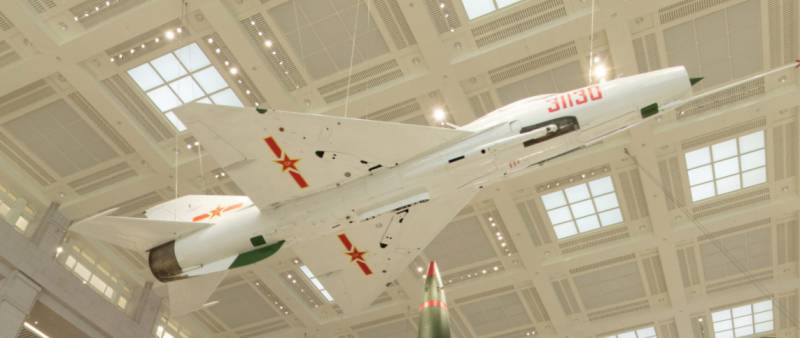
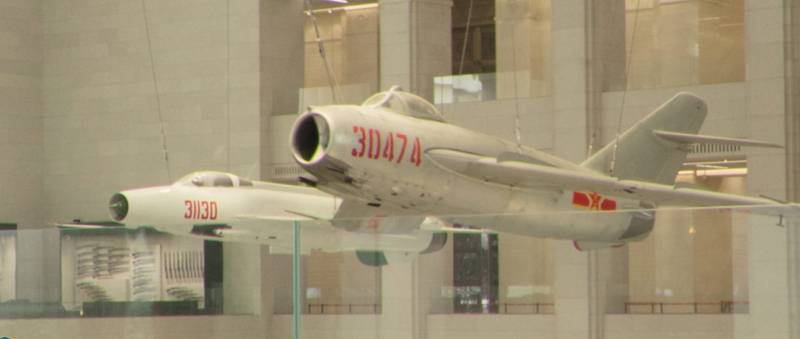
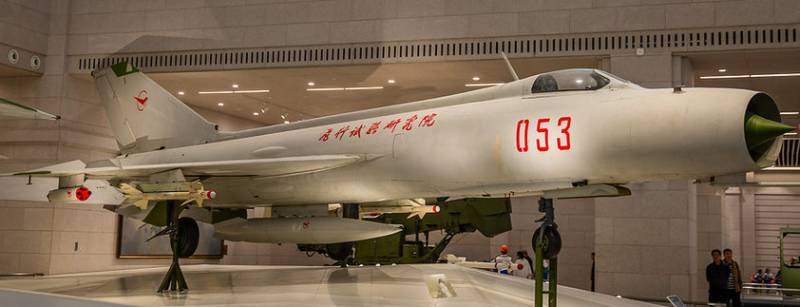
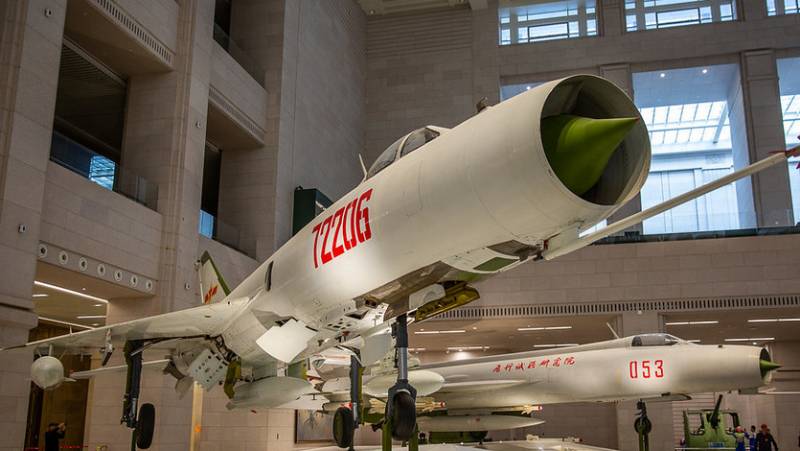
Information